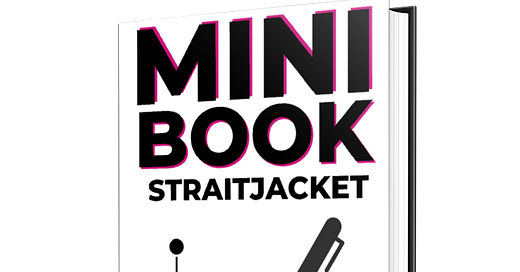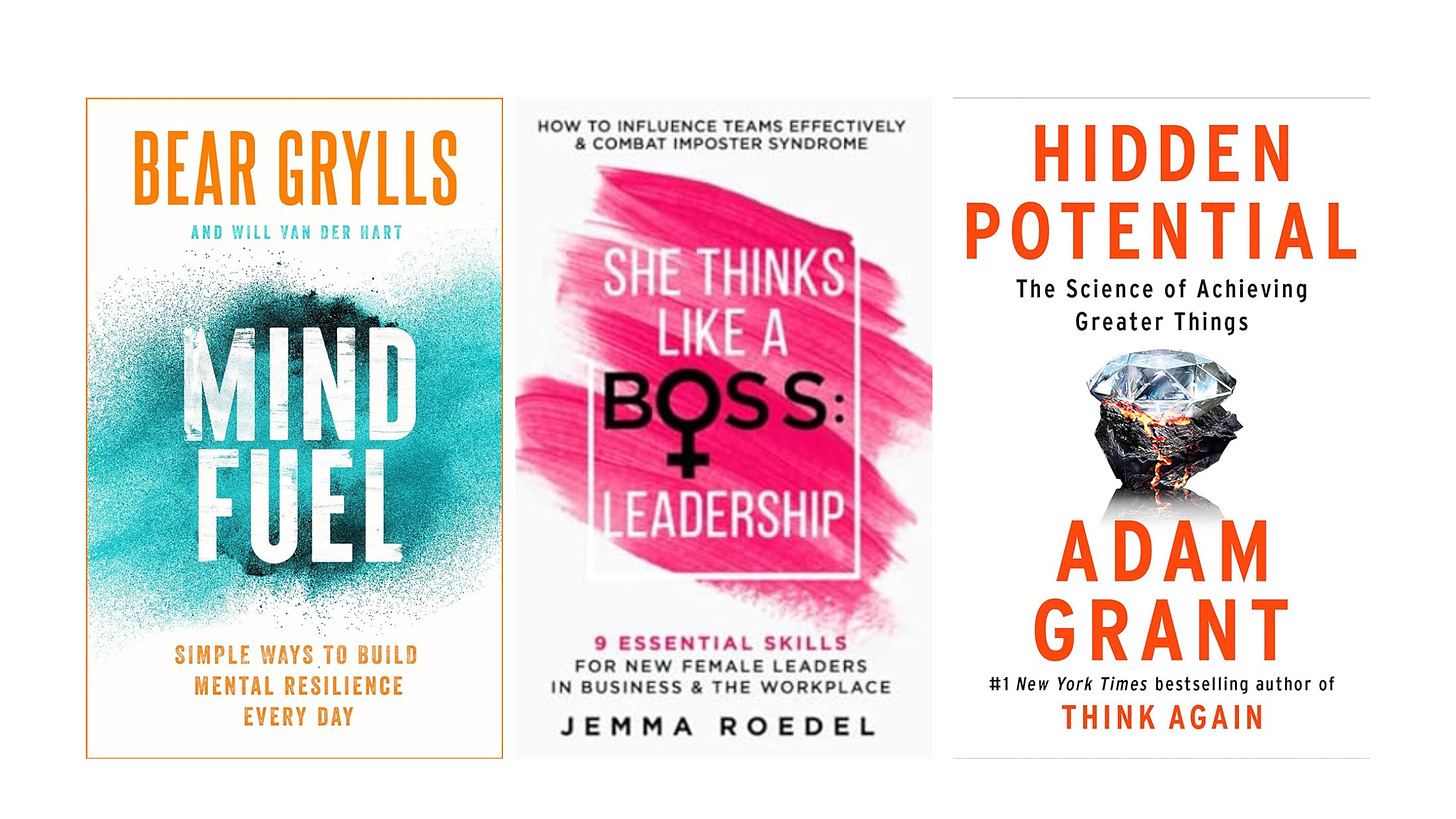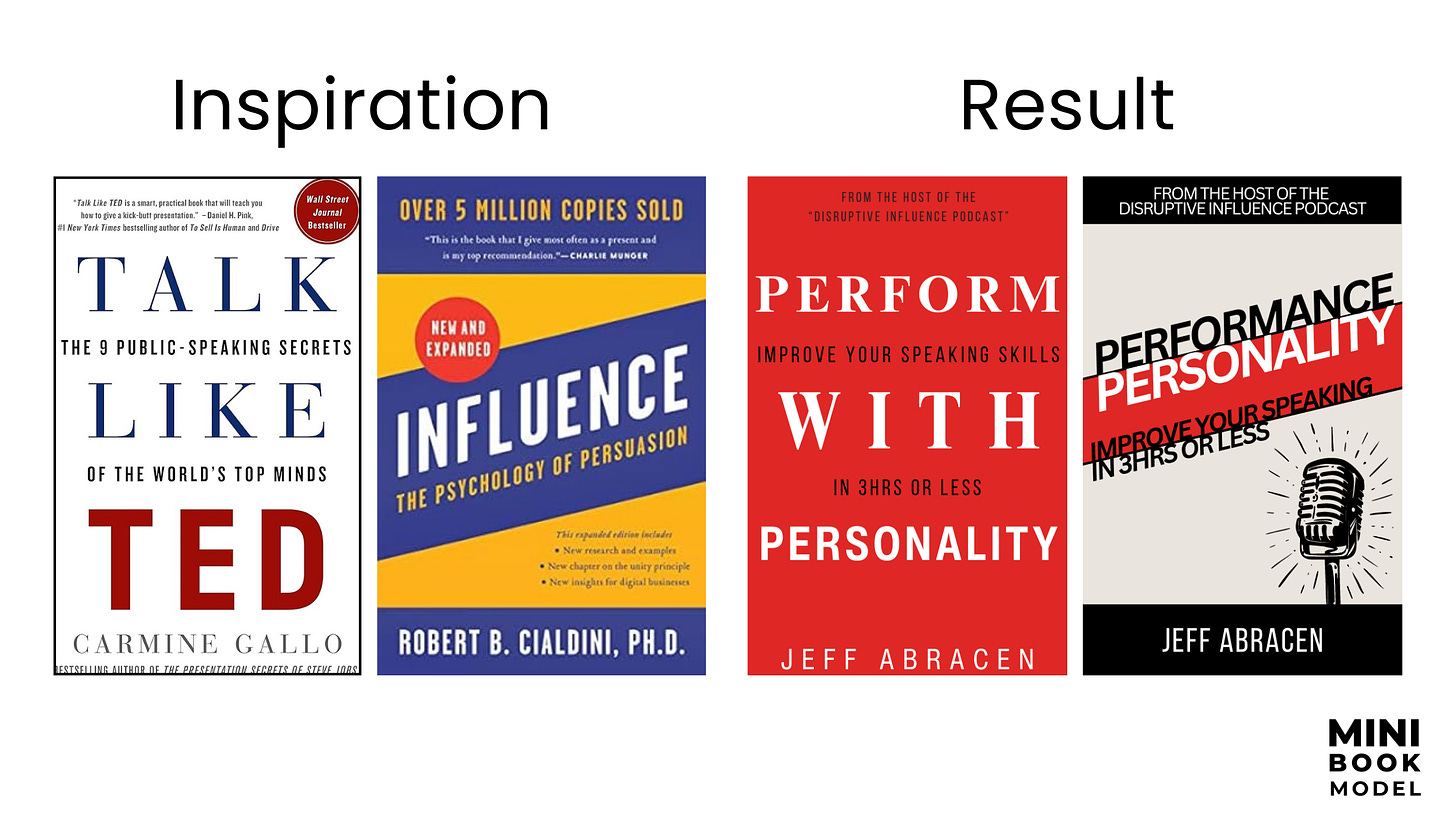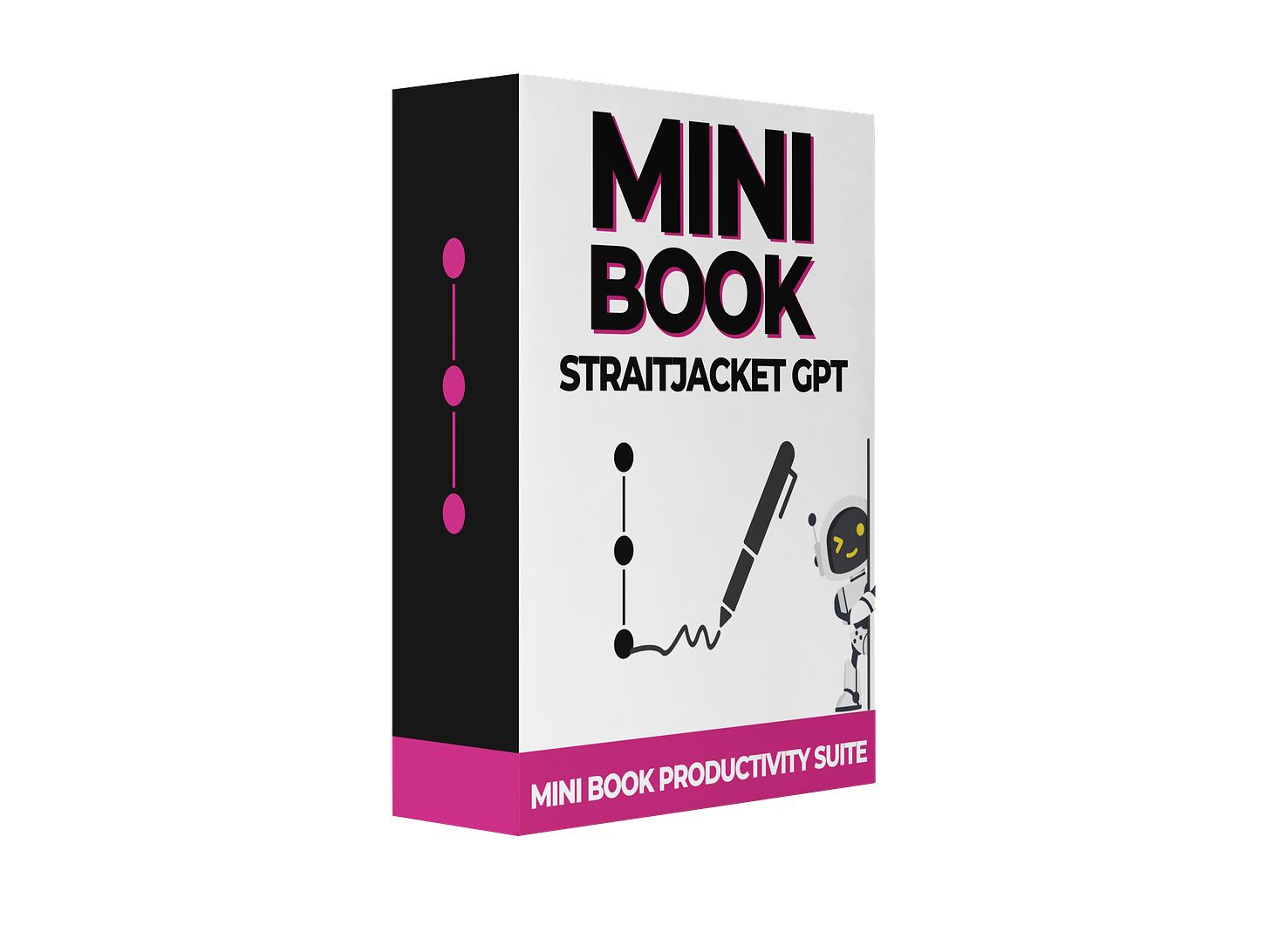Step 1: Create a POWER Promise to the Reader
Chapter 1 of the Mini Book Straitjacket (Mini Book 7 Day Challenge: Day 2)
(This is the First Chapter of my upcoming book Mini Book Straitjacket: How to Finish Your Non-Fiction Draft in 7 Days or Less and the first lesson in the Mini Book Straitjacket Course)
CHAPTER 1 - Step 1: Create a POWER Promise to the Reader
The number one thing you can do to make your book successful is to make a strong promise to your reader.
This promise to the reader is a promise of what problem you are going to help them solve. This promise is made through your title, your subtitle, and your book cover. The reader will decide on purchasing and reading your book based on these three things alone.
The success of your book is determined long before you write your first word; it's decided when you choose a problem and make a promise.
You communicate your promise in 5 different ways:
P – Problem the reader faces.
O – Offer of the solution to the problem.
W – Words that create a great hook in your title.
E – Expectation of transformation stated in the subtitle.
R – Reveal the genre and overall theme with your cover.
We'll break each of these down.
Problem & Offer of a Solution
Every good business and every good book starts by solving the correct problem for the customer.
When starting a business, you must know your customer and then decide what problem you want to solve for that customer. This is no different with your books. Each mini book you write should solve one singular problem your customer has.
It should help them achieve the big promise that your company aims to fulfill.
For instance, I help people write mini books, and this book is helping with the problem of getting your first draft done in 7 days or less.
Choosing a Problem
If you are having trouble choosing what problem to solve, consider these 3 growth catalysts:
Bigger is better: The bigger the problem or the pool of people that have a problem, the better.
Smaller is faster: A smaller promise that is quicker to experience makes the reader have a win fast and causes good reviews and viral word of mouth.
First in series bonus: If the problem you help solve is the first problem they will encounter, they will come back to you for additional answers.
The more of the growth catalysts your problem has, the better for your book and business. (You can find more on this concept in my book Simple Online Business Model.)
Choosing a Solution
Your solution doubles as the category of your solution.
You can solve a problem in several different ways, but how you choose to solve that problem defines your category of solution and book. To get a book written without taking a lot of your time, you could hire a ghostwriter, use ChatGPT, or write a mini book. My solution and therefore category is mini books.
Your solution is very important because it speaks a lot about the content of the book.
If you are having trouble knowing what solution or category your book should fall into, you may be trying to write the wrong book. The problem you are helping someone solve should be one you've already solved yourself. Then, the solution and category you are writing about should be the way that you solved that problem!
This is how you take the mystery out of writing a non-fiction book.
The book will practically write itself if you are just telling someone how you solved a problem in the past with a particular solution.
Timeline
Determine how soon the reader can expect their problem to be solved with your solution.
Going back to the "smaller is faster" point, it is easier to sell a book on how to write a non-fiction book in 7 days compared to how to spend 2 years writing your next book. You'll want to set realistic expectations and have real-world experience showing that their problem can be solved or at least begin to be solved in the amount of time you promise. Look back through your journey and see how fast you solved it. If someone else you know solved it quicker, then look at why and try to incorporate how they got faster results into your book.
Determining how fast someone can accomplish this, along with the problem and category of solution, will prepare you to come up with a killer title and subtitle in the next section of this chapter.
Title & Subtitle (Words & Expectation)
Title
A good title is the hook of your book.
Think of some of the greatest books of all time: Tipping Point, Snow Leopard, Start With Why. Each of these titles drives your curiosity and pulls you in, making you want to know more. Just like a good copywriter knows that a headline makes a sales page or that a headline can make an ad, the hook of the book—your title—can make or break the book.
This is why I believe you must start with the title & subtitle before you ever type a single word.
Having a good hook or a good title can actually birth a book all by itself.
I've written several books that were inspired by simply coming up with a hook. My books PDR Cash Box, Simple Online Business Model, and Misleading Money Mantra all began because I stumbled across these titles or hooks. This proves that the title is more than just a title; it's a hook for the reader and a hook for the author.
You will find it much easier to write a book when you are captivated by the title.
3 Different Types of Titles
There are 3 common types of titles I see expert-based nonfiction books utilize:
One Word Titles: Examples include Ask by Ryan Levesque, Blink by Malcolm Gladwell, and Margin by Richard Swenson.
Framework Titles: Examples include 4-Hour Workweek by Tim Ferriss, Simple Online Business Model by me, and Atomic Habits by James Clear. These use the name of the core concept or framework inside the book as the title.
Brand Titles: Examples include Business Made Simple by Donald Miller, Rich Dad Poor Dad by Robert Kiyosaki, and IA Path Playbook. These titles establish a company name in readers' minds.
Picking which of these to use will eliminate the name overwhelm many first-time authors face.
(Framework titles can be an awesome launching point for a new business or a new product. If you don't have your own framework, you can easily create one based on the topic you're looking to write a book on. Download my FRAMEworks worksheet to create your own at Minibookstraitjacket.com.)
Subtitle
While the title, as a hook, can be vague, the subtitle must be clear.
This is where you clear up any confusion or ambiguity in your one-word title. Even with framework titles like Simple Online Business Model, you need to clarify what will happen when your framework is applied. The reader wants to know: if I follow your framework and read your book, what will happen?
This is the job of your subtitle, to eliminate any questions that remain after the title.
The ambiguous one-word titles become perfectly clear when you add the subtitle:
Ask: The Counterintuitive Online Method to Discover Exactly What Your Customers Want to Buy . . . Create a Mass of Raving Fans . . . and Take Any Business to the Next Level
Blink: The Power of Thinking Without Thinking
Margin: Restoring Emotional, Physical, Financial, and Time Reserves to Overloaded Lives
You might have been unsure what you'd get out of "Ask," but now you know exactly what the author is promising.
Our framework and brand titles zero in on the transformation someone will experience if they apply their framework:
The 4-Hour Workweek: Escape the 9-5, Live Anywhere, and Join the New Rich
Atomic Habits: An Easy & Proven Way to Build Good Habits & Break Bad Ones
Business Made Simple: 60 Days to Master Leadership, Sales, Marketing, Execution, Management, Personal Productivity, and More
A good subtitle offers a clear transformation that the reader will experience if they pick up, read, and apply your book.
Cover
Your book cover reveals to the reader the genre, theme, and feel of the book.
Is it going to be a female power book? Or a book written by a manly man like Bear Grylls? Is it an intellectual or a straightforward how-to book?
Letting the potential reader know will help them decide if this is the right fit for them, which increases the number of happy readers and the average rating of your review.
My framework for creating book covers is the QUICK Book Cover Model:
Q – Qualify what a good selling book cover looks like by finding three you like the feel of on Amazon.
U – Upload those designs to Canva or Bookbrush.
I – Insert the elements and recreate the book cover as close as possible.
C – Customize the cover by changing the title, subtitle, author name, images, and colors to match your book and brand.
K – Kindle ready, ensure your cover meets Kindle requirements and is ready for publication.
Let's run through these quickly.
Q – Qualify a Best Selling Book Cover
Head to Amazon and search the non-fiction best selling books in a broad category like business or self-help, that will match the big category of your book.
Find three books with hundreds if not thousands of reviews. These will serve as your bestselling models. If your title is one word, try to find one-word titles.
Once you find a title that you feel you'd like the look and feel of something similar, right-click and save it to your computer.
U – Upload Designs to Canva/BookBrush
Take your three designs and upload them to your design software of choice, something like Canva or Bookbrush.
You're going to select an ebook cover as the template and dimensions. You'll use each of these designs you've downloaded as the background of your design. Simply lock it in place so you can manipulate things on top of it without moving it around.
This will serve as something you can model after.
I – Insert Elements
You'll add text and images to recreate the book cover.
You'll need to determine the style and size of the font. Match the colors on the background, images, and text. Find images that match any on the cover.
Most book covers are simpler than you first imagine, so get it really close to the original, but don't stress if it's a little off.
C – Customize the Cover
Now you change everything to make it your book.
Change the words to be your title, subtitle, and author name. Change the images to be your own unique ones. Change the colors to match your brand and vibe.
In the end, you'll have something that drew inspiration from but doesn't look exactly like the original cover, like the ones I did for my friend Jeff below.
K – Kindle (KDP) Ready
You'll need to make sure your cover is ready to upload to Amazon's publishing service called KDP:
1,600 x 2,560 pixels
Under 50 MB
JPEG file type
Download your file, make sure it meets those requirements, and you have your book cover DONE!
You now have a POWER promise to your reader. You are hooking the potential reader with your title, communicating a clear transformation they will experience if they buy, read, and apply your book. Plus, you have a cover that communicates all of that and the theme and feel of your book in an instant.
This will guide you every step through the rest of your book creation journey.
Action Step: Craft Your POWER Promise
Identify the Problem:
Think about the main issue your book will address for your readers. Write down this problem clearly and concisely.
Formulate Your Offer:
Determine the solution you are providing to solve this problem. Make sure your offer is compelling and actionable.
Create a Hook for Your Title:
Brainstorm a list of potential titles that hook your readers' interest. Aim for something that is intriguing and directly related to your topic.
Draft Your Subtitle:
Clearly state the transformation or benefit the reader will experience by applying the content of your book. Ensure it complements the title and provides clarity.
Design Your Book Cover:
Sketch out ideas or use design software to create a mock-up of your cover. Include your title and subtitle, and think about the imagery and colors that will best convey your book's theme and genre.
By completing these steps, you'll have a strong POWER promise that hooks your readers and sets clear expectations, making your book more attractive and compelling. Share your progress with the Mini Book Masters community to get feedback and refine your promise even further.
PREMIUM CONTENT: Mini Book Straitjacket Prompt
The premise of this ChatGPT is very simple, it doesn’t write the book for you, it doesn’t write the outline for you, it guides YOU through the process.
Below is a link to the GPT I built to help you outline your entire book.










Ahh that's my manuscript for the book so I put the call to action in the manuscript but no the book isn't officially released and the site is not up and running yet.
Sorry for the confusion
Thank you very much, Chris! It's all very useful.
I tried to access your website, that you mentioned above, Minibookstraitjacket.com. But unfortunately it doesn't seem to up and running.
I fully understand if you're busy, and please don't feel rushed in any way. I'm not impatient in any way. I just want to hear if it's a simple mistake, or if it's under construction.
Thanks :)